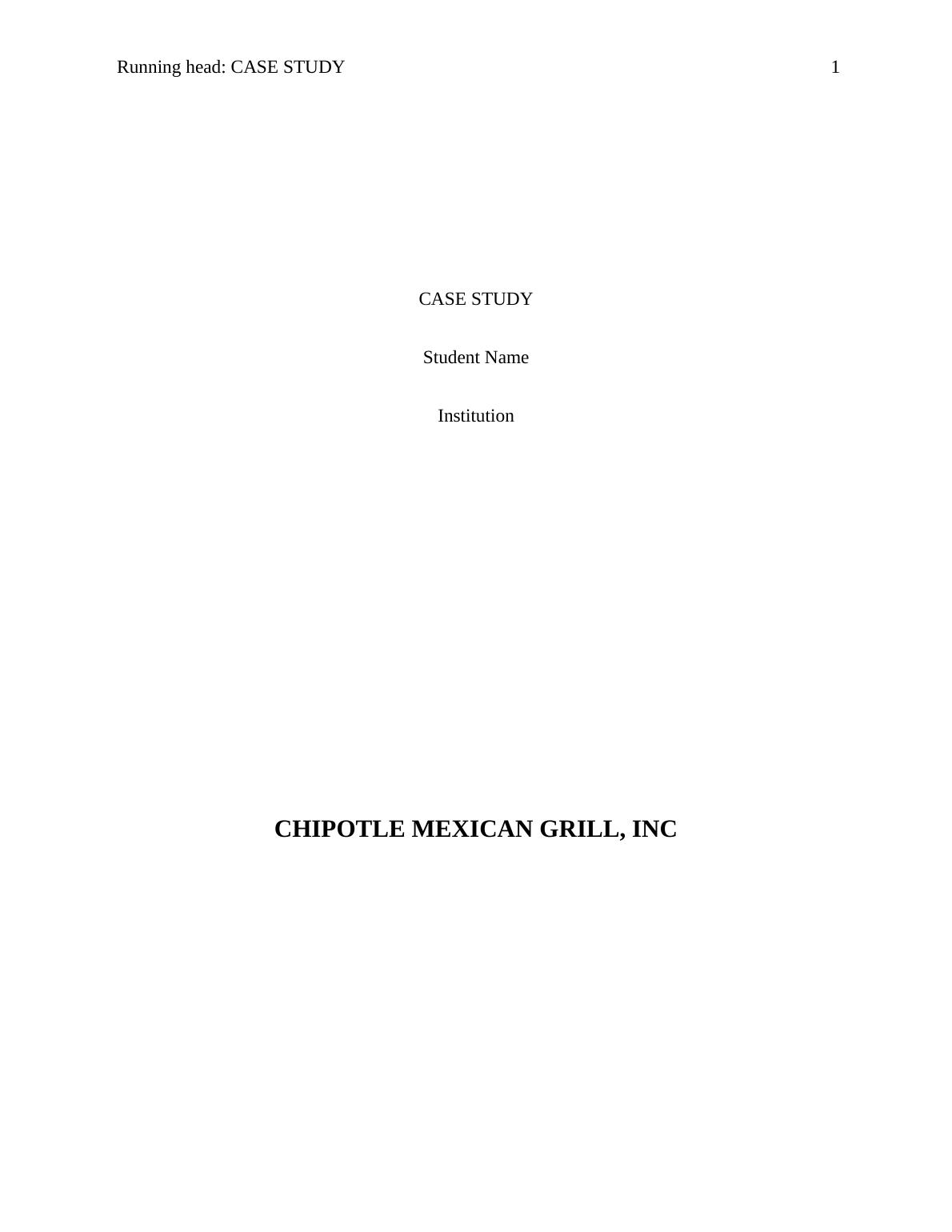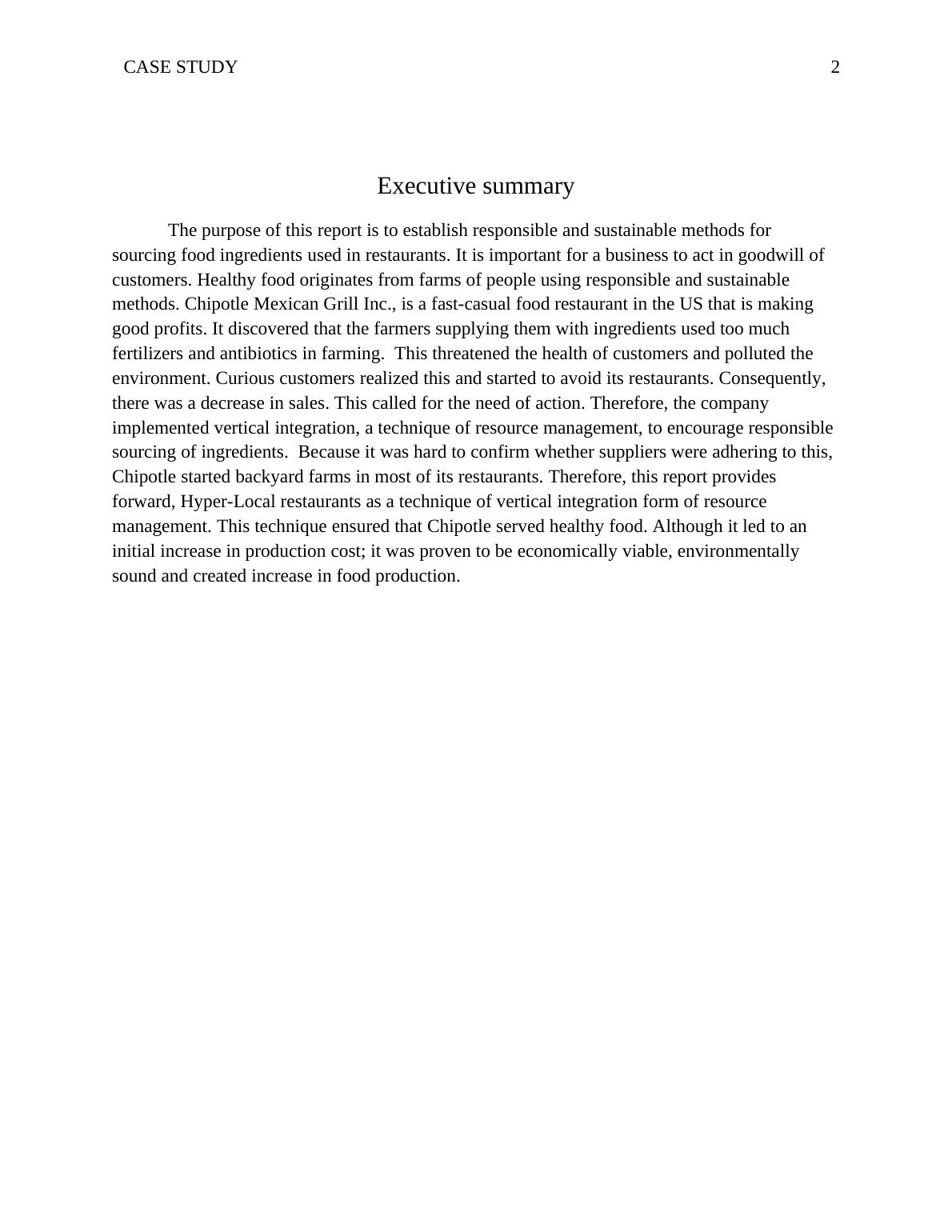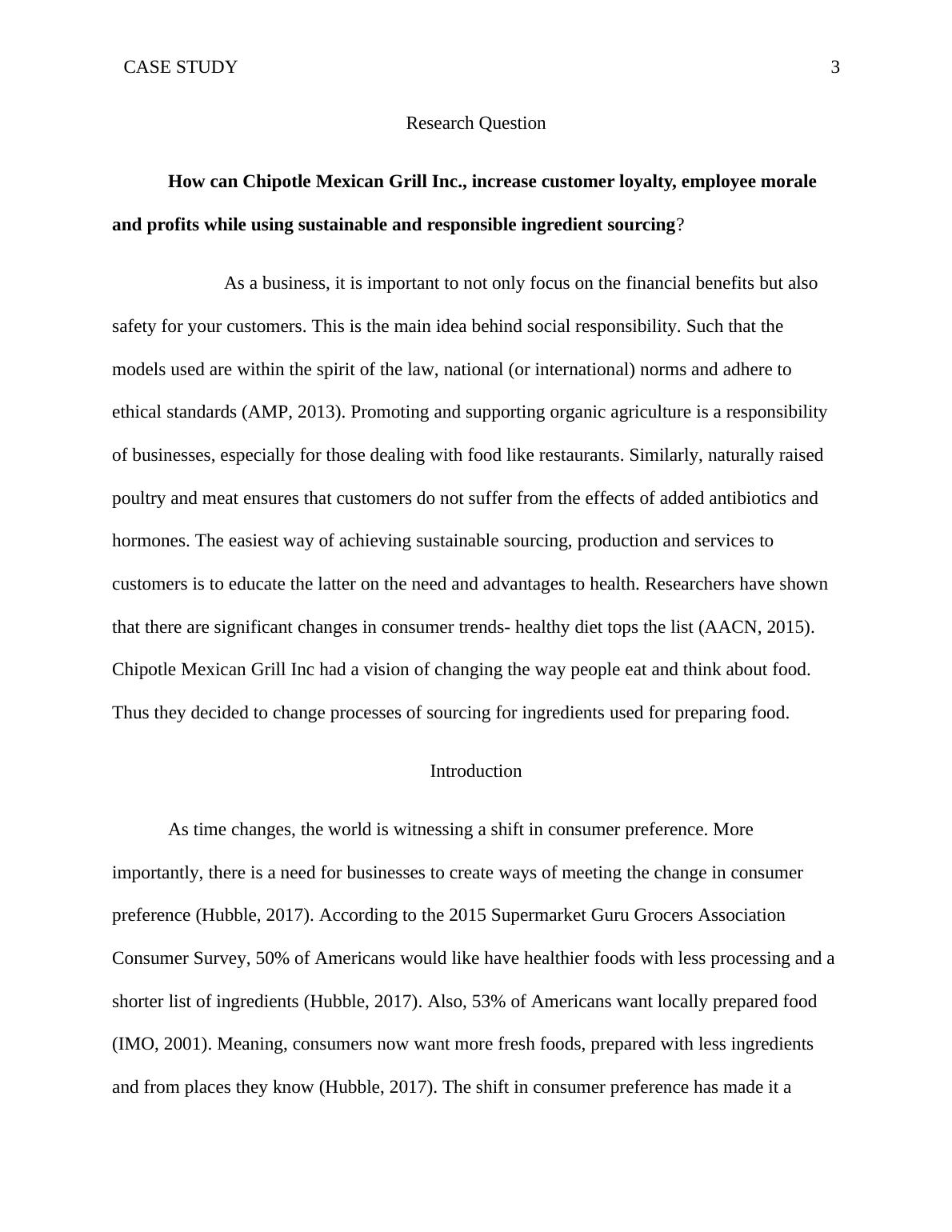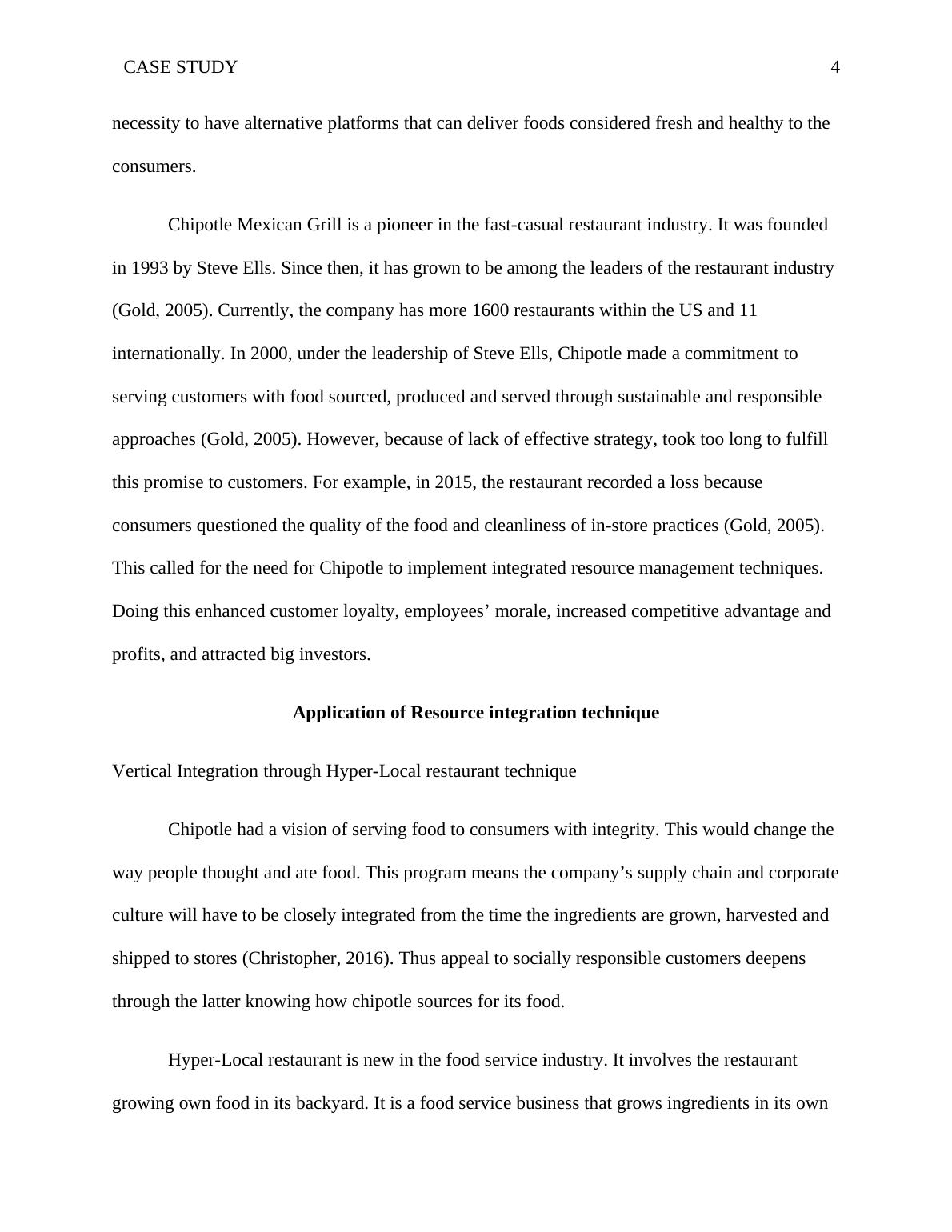Chipotle Mexican Grill | Case Study
Added on 2020-03-28
12 Pages2834 Words449 Views
Running head: CASE STUDY 1CASE STUDYStudent NameInstitutionCHIPOTLE MEXICAN GRILL, INC

CASE STUDY 2Executive summaryThe purpose of this report is to establish responsible and sustainable methods for sourcing food ingredients used in restaurants. It is important for a business to act in goodwill of customers. Healthy food originates from farms of people using responsible and sustainable methods. Chipotle Mexican Grill Inc., is a fast-casual food restaurant in the US that is making good profits. It discovered that the farmers supplying them with ingredients used too much fertilizers and antibiotics in farming. This threatened the health of customers and polluted the environment. Curious customers realized this and started to avoid its restaurants. Consequently, there was a decrease in sales. This called for the need of action. Therefore, the company implemented vertical integration, a technique of resource management, to encourage responsible sourcing of ingredients. Because it was hard to confirm whether suppliers were adhering to this, Chipotle started backyard farms in most of its restaurants. Therefore, this report provides forward, Hyper-Local restaurants as a technique of vertical integration form of resource management. This technique ensured that Chipotle served healthy food. Although it led to an initial increase in production cost; it was proven to be economically viable, environmentally sound and created increase in food production.

CASE STUDY 3Research QuestionHow can Chipotle Mexican Grill Inc., increase customer loyalty, employee morale and profits while using sustainable and responsible ingredient sourcing?As a business, it is important to not only focus on the financial benefits but also safety for your customers. This is the main idea behind social responsibility. Such that the models used are within the spirit of the law, national (or international) norms and adhere to ethical standards (AMP, 2013). Promoting and supporting organic agriculture is a responsibility of businesses, especially for those dealing with food like restaurants. Similarly, naturally raised poultry and meat ensures that customers do not suffer from the effects of added antibiotics and hormones. The easiest way of achieving sustainable sourcing, production and services to customers is to educate the latter on the need and advantages to health. Researchers have shown that there are significant changes in consumer trends- healthy diet tops the list (AACN, 2015). Chipotle Mexican Grill Inc had a vision of changing the way people eat and think about food. Thus they decided to change processes of sourcing for ingredients used for preparing food.IntroductionAs time changes, the world is witnessing a shift in consumer preference. More importantly, there is a need for businesses to create ways of meeting the change in consumer preference (Hubble, 2017). According to the 2015 Supermarket Guru Grocers Association Consumer Survey, 50% of Americans would like have healthier foods with less processing and a shorter list of ingredients (Hubble, 2017). Also, 53% of Americans want locally prepared food(IMO, 2001). Meaning, consumers now want more fresh foods, prepared with less ingredients and from places they know (Hubble, 2017). The shift in consumer preference has made it a

CASE STUDY 4necessity to have alternative platforms that can deliver foods considered fresh and healthy to the consumers.Chipotle Mexican Grill is a pioneer in the fast-casual restaurant industry. It was founded in 1993 by Steve Ells. Since then, it has grown to be among the leaders of the restaurant industry(Gold, 2005). Currently, the company has more 1600 restaurants within the US and 11 internationally. In 2000, under the leadership of Steve Ells, Chipotle made a commitment to serving customers with food sourced, produced and served through sustainable and responsible approaches (Gold, 2005). However, because of lack of effective strategy, took too long to fulfill this promise to customers. For example, in 2015, the restaurant recorded a loss because consumers questioned the quality of the food and cleanliness of in-store practices (Gold, 2005). This called for the need for Chipotle to implement integrated resource management techniques. Doing this enhanced customer loyalty, employees’ morale, increased competitive advantage and profits, and attracted big investors.Application of Resource integration techniqueVertical Integration through Hyper-Local restaurant techniqueChipotle had a vision of serving food to consumers with integrity. This would change the way people thought and ate food. This program means the company’s supply chain and corporateculture will have to be closely integrated from the time the ingredients are grown, harvested and shipped to stores (Christopher, 2016). Thus appeal to socially responsible customers deepens through the latter knowing how chipotle sources for its food.Hyper-Local restaurant is new in the food service industry. It involves the restaurant growing own food in its backyard. It is a food service business that grows ingredients in its own

End of preview
Want to access all the pages? Upload your documents or become a member.
Related Documents
Chipotle Mexican Grill | Reportlg...
|9
|2061
|20
Competition in the Fast-food Industry: Major Competitors and Their Competitive Advantagelg...
|5
|853
|94
Chipotle Mexican Grill, Inc.: Disrupting the Fast-food Businesslg...
|16
|3562
|141
Analysis of Chipotle Mexican Grill: Internal and External Environmentlg...
|13
|3386
|477
Business Plan of a Restaurantlg...
|29
|7099
|237
Case Study of Chiltole Mexican Grilllg...
|5
|920
|77